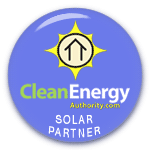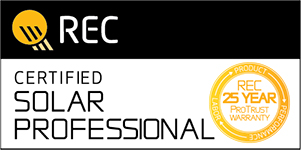What is Photovoltaic (Solar Electric) Energy?
Photovoltaic(PV) systems convert sunlight directly to electricity. They work any time the sun is shining, but more electricity is produced when the sunlight is more intense and strikes the PV modules directly (as when rays of sunlight are perpendicular to the PV modules).
Electrons freed by the interaction of sunlight with the semiconductor materials in PV cells are captured in an electrical current.
PV allows you to produce electricity without noise or air pollution - from a clean renewable source. A PV system never runs out of fuel, and it won't increase U.S. oil imports.
The basic building block of PV technology is the solar "cell."

Multiple PV cells are connected to form a PV “module,” the smallest PV component sold commercially. Modules range in power output from about 100 watts to over 400 watts. A PV system connected or tied to the utility grid has these components:
- One or more PV modules, which are connected to an inverter
- The inverter, which converts the system's direct-current (DC) electricity to alternating (AC)
- AC electricity is compatible with the utility grid. It powers out lights, appliances, computers and televisions.





